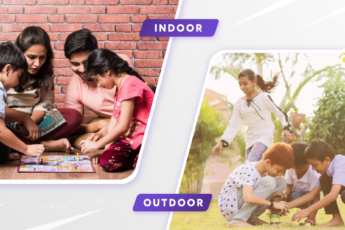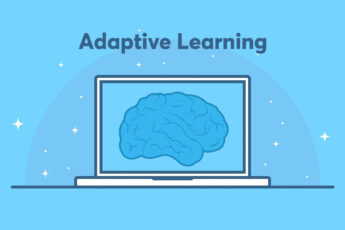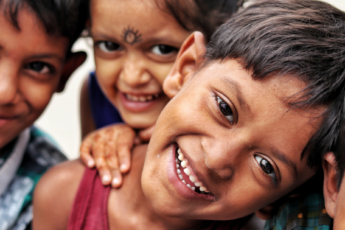The Inclusive Classroom: Teaching Multicultural Kids With Diverse Learning Needs

India is a land of multiple religions, cultures, ethnic groups, and languages, which come together to give our nation its status as a diverse country. We also boast of the largest education system in the world, catering to more than 260 million children. Social mobility makes the crowd in the classroom more and more diverse by each year; with such a diverse population, a crucial need for inclusive learning arises, which can successfully cater to the diverse learning needs of each student.
The need for inclusive classrooms emerges right from early childhood, which is the critical period of brain development.
The ASER 2019 report shows 90% of children in the age group of 4-8 years as enrolled in some type of educational institution. Of these, a large proportion of 5-year-olds was unable to perform expected tasks with ease, with children from less advantaged homes affected disproportionately. At this stage of development, early learning experts recommend students should be developing cognitive, social, and emotional skills as well as the conceptual foundations needed for formal schooling. While the recent policy released by the Department of Education (the NEP 2020) does mention a need to “ensure inclusive and equitable quality education and promote lifelong learning opportunities for all by 2030”, to create a force of literate future-ready youth, we need to translate the power of words into robust initiatives that can create a truly inclusive learning environment.
WHAT DOES INCLUSIVE EDUCATION LOOK LIKE?
The basic premise of inclusive education is that all children receive equal access to education rather than be segregated based on their individual, educational, social, emotional, financial, linguistic, or physical impairments.
Inclusive classrooms aim to bring all students together regardless of their strengths or weaknesses in any area and seek to maximize each child’s potential.
TODAY, WHAT ARE THE NEEDS AND CHALLENGES FOR ACHIEVING THE GOAL OF INCLUSIVE EDUCATION?
While the government of India has made strides in adopting inclusive policies to provide an equitable education for all, we still have a way to go before we can cater to multiculturalism and diverse learning needs successfully. The current education system in India faces some challenges for achieving inclusive education:
- A lack of trained educators.
- Large class sizes with multi-age classrooms.
- Linguistic diversity posing a challenge for educators.
- Marginalisation based on socio-economic, cultural, and ethnic backgrounds.
HOW QUALITY EDUCATION CAN BE EFFECTIVELY AND EFFICIENTLY DELIVERED FOR DIVERSE GROUPS OF CHILDREN?
The need of the hour is to have equal access to high-quality education right from the foundational ages, across geographical and socio-economic boundaries. For this vision to materialise, the Indian education system needs to adopt certain practices:
Educator Training, Empowerment, & Education: An educational system is only as good as its educators. If learning has to be streamlined, yet personalised and adapted to individual learning needs, educators, anganwadi workers, and balwadi workers across India need to be empowered to recognise and instruct as per the diverse learning needs. The NEP 2020 recognises the importance of training educators, by adding this clause to its document: “The awareness and knowledge of how to teach children with specific disabilities including learning disabilities will be an integral part of all teacher education programmes, along with gender sensitization and sensitization towards all underrepresented groups in order to reverse their underrepresentation.”
Adoption Of Adaptive Software: From the ground up, educational institutions need to equip themselves with adaptive software and technology, to help teachers create a holistic blended classroom that allows them to personalise learning as per each student’s learning level.
Changing The Mindset: While educators work on imparting education from the early stages itself, a collaborative effort needs to be undertaken to involve parents in the teaching-learning process. All stakeholders in the learning process-the parents, the educators, the policymakers-need to work in tandem to see successful learning outcomes in inclusive classrooms.
Need For Flexible, Adaptive Curriculum And Learning Tools: Every child learns differently, and a one-size-fits-all approach is detrimental to the acquisition of learning. Something that the NEP 2020 mentions too, an adaptive blended curriculum that works with each learner’s learning level, can serve to assimilate students of all kinds and ages into inclusive classrooms.
“Education is the single greatest tool for achieving social justice and equality. Inclusive and equitable education – while indeed an essential goal in its own right – is also critical to achieving an inclusive and equitable society in which every citizen has the opportunity to dream, thrive, and contribute to the nation. The education system must aim to benefit India’s children so that no child loses any opportunity to learn and excel because of circumstances of birth or background. This Policy reaffirms that bridging the social category gaps in access, participation, and learning outcomes in school education will continue to be one of the major goals of all education sector development programmes.” – NEP 2020
Policies provide a good model to promote inclusive education. Presently, we need to transfer learnings from the policy to the education sphere. In a diverse nation like ours, a multicultural perspective in the education sector starting from the foundational stages is what will help us create a truly unified country that boasts equality across the Indian educational landscape.




Leave a Comment